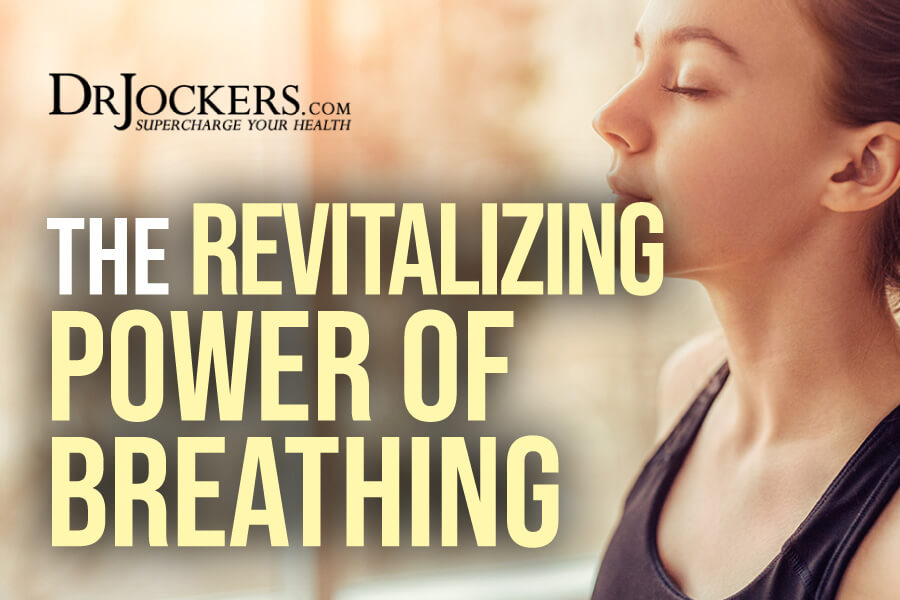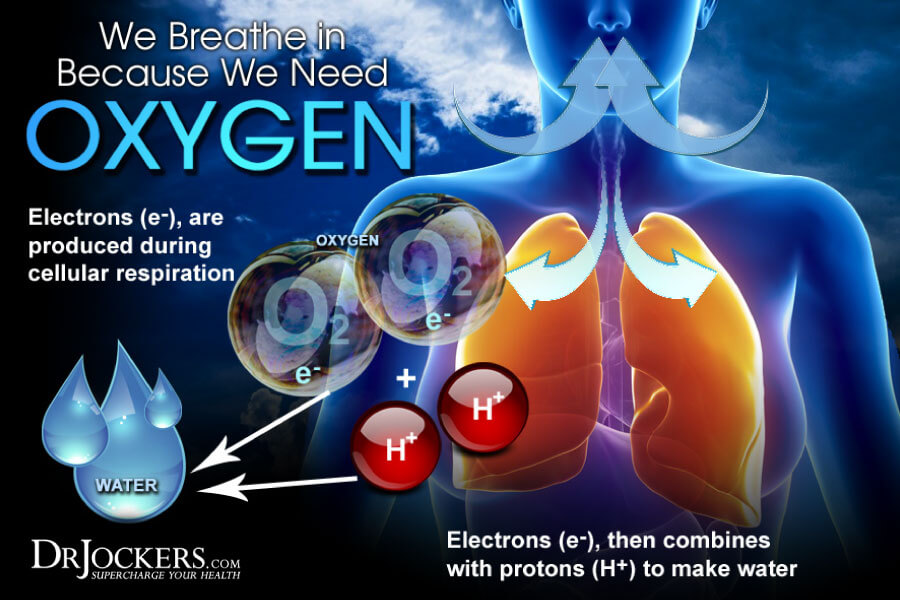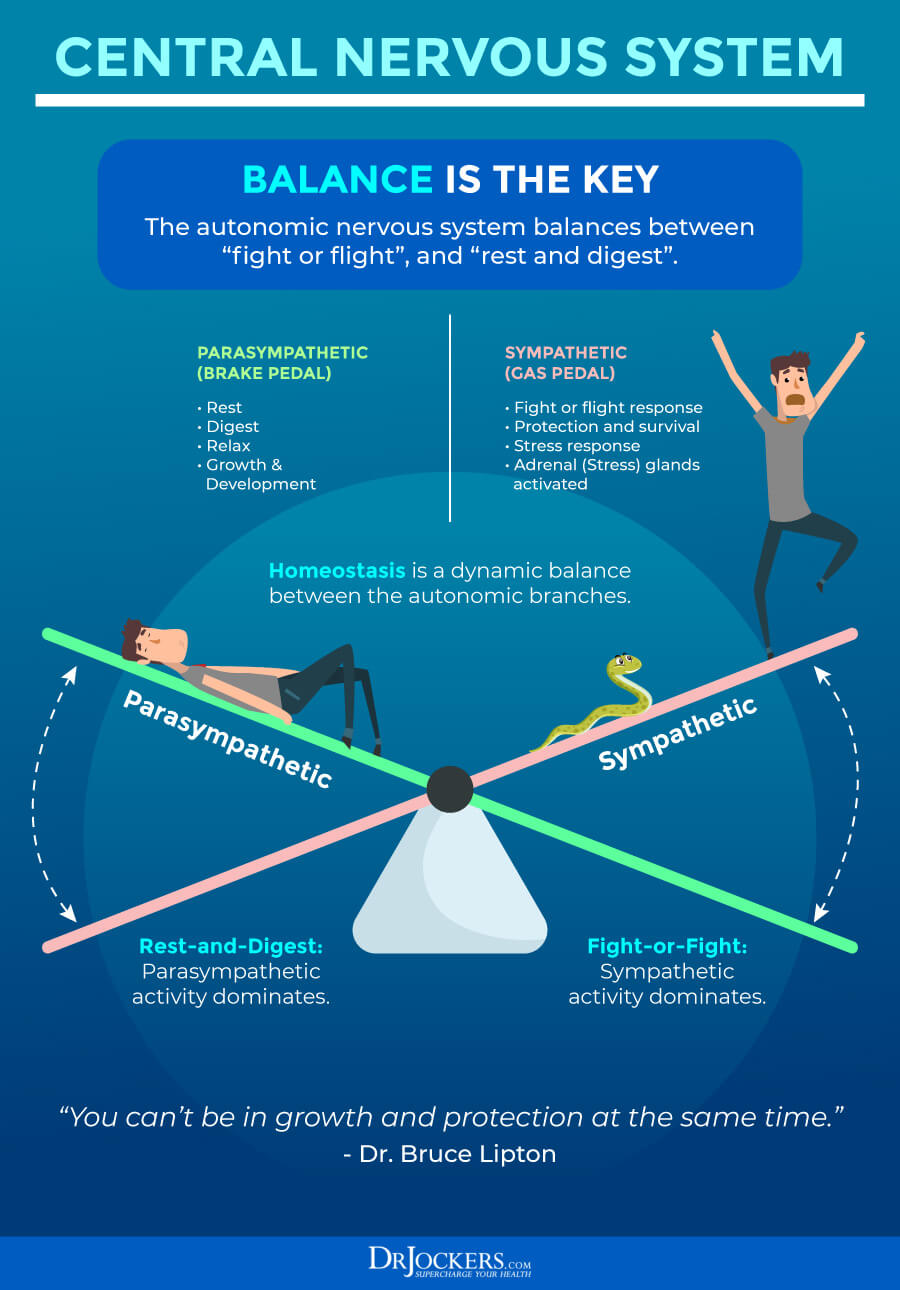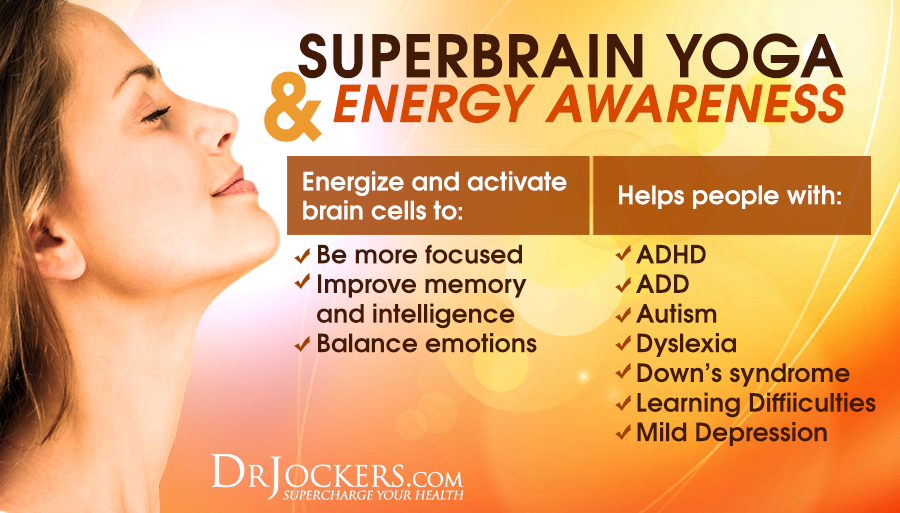
The Revitalizing Power of Breathing:
“Breathing is the FIRST place not the LAST place one should investigate when any disordered energy presents itself.”
Sheldon Saul Hendler, MD Ph.D. , The Oxygen Breakthrough,
Arguably the most important aspect of mental and physical health and well-being is the respiratory process of breathing. This has been known throughout the history of mankind. Consider that during the course of your life you are “inspired” by ideas, “aspire” toward your goals and dreams, and finally “expire” at the end of your life.
Many of the ancients developed lifestyles and physical exercises such as yoga and qui-gong that are based around the patterns of breathing and respiratory cycles. So why is breathing so important? It has been suggested that the average individual can survive:
40 days without food
4 days without water
4 minutes without oxygen

OXYGEN AND LIFE FUNCTION
It is true that oxygen is absolutely essential for all human function. In fact, the primary homeostatic mechanism in the human body is designed around necessitating appropriate cellular oxygenation.
The respiratory and cardiovascular systems provide and properly distribute oxygen to the cellular mitochondria, where it serves as the terminal electron acceptor in the oxidative phosphoralization process and the formation of cellular ATP. All human performance, energy, and function is based on appropriate tissue oxygenation.
Endurance, the ability to sustain vigorous effort, is substantiated by the ability of the heart and lungs to supply oxygen to the working muscles (1). Although many factors have an impact, endurance and human working capacity end when the cardiovascular and pulmonary systems can no longer keep up with the demands for oxygen.
In addition, the structural and functional integrity of brain and viscera are profoundly dependent on regular oxygen supply. Any disturbance of this supply can be life threatening.

OXYGEN AND DISEASE
The world famous Dr. Arthur Guyton theorized that all chronic pain, suffering and diseases are caused from a lack of oxygen at the cellular level (2). Lack of cellular oxygen is termed hypoxia. Hypoxia has been implicated in central nervous system pathology in a number of disorders including cancer, heart disease, stroke, and various other neurodegenerative diseases (3). Among other diseases, regions of low oxygen tension are commonly found in malignant tumors and are associated with increased frequency of tumor invasion and metastasis (3)
Consider this: The average human being breaths between 12 – 18 breaths a minute. That equates to 18,000 to 26,000 breaths every 24 hours. It has been suggested that at rest we should consume 6 breaths in a minute to supply our needs. The extra activity involved in our short, shallow breathing habits is robbing us of precious energy, producing toxic waste products and promoting disease in our bodies.

PREDICTING DEATH RATES:
Dr. Schunemann actually found in a long-term study that lung function predicts mortality rates. He explains, “The lung is a primary defense organism against environmental toxins. It could be that impaired pulmonary function could lead to decreased tolerance against these toxins. Researchers also have speculated that decreased pulmonary function could underlie an increase in oxidative stress from free radicals, and we know that oxidative stress plays a role in the development of many diseases.(4)”
Dr. Wendell Hendricks,(Two-time Nobel Laureate, Winner of the Nobel Prize for Cancer Research, Hendricks Research Foundation) said the following. “Cancer is a condition within the body where the oxidation has become so depleted that the body cells have degenerated beyond physiological control.
Similarly, the true cause of allergy is lowered the oxidation process within the body, causing the affected individual to be sensitive to foreign substances entering the body. Only when the oxidation mechanism is restored to its original high state of efficiency can the sensitivity be eliminated.”

CHEST VS. ABDOMINAL BREATHING
Effective and efficient oxygenation of the cells, tissues, and organs of our body is an absolute energy necessity. Our respiration cycles are governed by the autonomic nervous system. When your body is under stress you tend to take short, shallow breaths. Because these breaths only penetrate into the upper portion of the chest and lungs they are called “chest breaths.”
This reduces your bodies’ ability to effectively oxygenate. This is appropriate in order to increase respiratory rate when you are under truly stressful situations, like being chased by a lion or sprinting on a track. However, when it continues for an extended period of time it sets up the pathological processes described earlier.
Several studies have shown that heart disease, depression, anxiety, and chronic pain patients have an intimate relationship with persistent shallow, chest breathing behaviors. Several researchers have suggested maintenance of posture and breathing habits to be the most important factor in health and energy promotion.

HEART FUNCTION:
Diaphragmatic or abdominal breathing is the proper way to respirate. Taking deep, diaphragmatic breaths is necessary to get the oxygen rich air deep into the base of the lungs where three times as many blood vessels are available for respiratory exchange compared to the upper lung region.
Amazingly, when we are taking deep breaths, our diaphragm, which is attached to the heart, is able to pull the heart down and massage it with each breath. This process optimizes the body’s natural ability to pump fluid and nutrients into the heart vasculature and suck out the wastes. In the absence of diaphragmatic breathing, the body is unable to adequately deliver nutrients and eliminate wastes from the heart. (6)
Dr. Guy Hendricks says “Healthy breathing should be the first thing taught to a heart patient. A Dutch Study conducted by a Dr. Dixhoorn, compared two groups of heart attack patients. The first group was taught simple diaphragmatic breathing, while the second group was given no training in breathing. The breathing group had no further heart attacks, while 7 of the 12 members of the second group had second heart attacks over the next 2 years.”

CHRONIC PAIN AND DEPRESSION:
The diaphragm is also attached to the lumbar spine and produces a natural rhythm of movement that stretches the back and pumps fluid and essential nutrients into the avascular soft tissue structures like the intervertebral disc and ligaments, preventing and possibly correcting spinal degeneration and chronic pain syndromes.
The effects continue in that proper diaphragmatic movement pumps cerebrospinal fluid (the fluid around the spinal cord), which results in an increase in brain metabolism and the resulting feelings of physical and mental well-being and enhanced mental alertness.
It is essential to focus on your breathing throughout the day. Take pauses in your activities to correct your posture and take long, deep breaths from the belly. The body responds to this stimulus by relaxing, understanding that it is not in a life-threatening situation (obviously if you are breathing long, slow, deep breaths you are not being chased by a lion).
The parasympathetic nervous system is activated, calming stress hormones, decreasing heart rate and blood pressure. As you consume more oxygen and release metabolic waste products like carbon dioxide you will improve your mood and energy levels.(8)

Steps to Tranform Your Breathing Habits:
- Awareness of your breath
- Roll your shoulders back and slightly tip your head back
- Put your hand about an inch away from your navel.
- As you take a deep inhalation, your navel should expand out and hit your hand.
- As you exhale your abdomen should sink back in.
*If you notice your chest moving a lot as you breathe – than you guessed it – you’re a chest breather. The good news is that you can change that today and experience a new life of energy and “inspiration.”
To Optimize Breathing Habits For Life
- Continual awareness and practice of correct breathing mechanics.
- Chiropractic care and specific posture and neurological rehabilitation exercises
- Engage in a regular aerobic exercise program
- Engage in a regular yoga, pilates, and spinal hygiene exercise program
- Consider doing our Superbrain yoga (or super brain squats) each day in order to improve brain and breathing patterns.




So if im doing aerobic exrice i wil be able to brethe more deeply?
Yes it can help Gabi!
Can a Chiropractor set up a program for me to follow that will improve my overall health? How often should I see a chiropractor? Do you have any recommendations for a chiropractor in Ellis county?
I am on medication for Hypothyroid, COPD and heart irregularity. Is there a clinic or program you would recommend to confirm issues I may/may not have?
Will you please respond your answer to me via E-mail because I do not know how to get back to this page I am submitting my question on. Also I have started taking your Brain Calm Magnesium. I am praying I receive a correspondence from you and that this is not a marketing technique.
I absolutely enjoy all the information on you emails when they come in .
Amazing new and such good stuff I read and use a lot of your information.
My energie level has gone up expedentialy by changing to the Keto diet supplements and all the tips you have given. Lowered my chronic pain and inflammation from years of all this low-fat food that I thought was the right food to eat.Thank you so much and look forward to your next mail
Ellen de Man
That is amazing to hear Ellen, thank you for sharing!
Due to severe chronic stress, i was a shallow breather most of my life…more evident the last 2 yrs before my adrenal fatigue crisis. The odd thing is that my chronic hi cortisol prevents me from taking deep breaths, but not for lack of oxygen…feels as if my body resists it. I can take deep breaths, but it feels unnatural…so, have to be mindful to do it right.
Explanation?
Thanks!
Hey Robyn, Yes, High stress levels cause increased heart rate and shallow breathing which then keeps cortisol levels elevated. Getting low intensity exercise can help your body recover from chronic stress. This article is helpful: https://drjockers.com/thriving-stress/
Will this deep breathing method help with lipedema
Yes it can!
The statement you’re asking about is often found in various health-related articles and posts, particularly those promoting alternative cancer treatments. However, there are several red flags that suggest the quote and the credentials attributed to “Dr. Wendell Hendricks” may not be accurate:
No Nobel Laureates by that Name: As of my last update in January 2022, there is no record of a Nobel Laureate by the name of Wendell Hendricks. The Nobel Prize is a highly prestigious award, and the list of laureates is well-documented and publicly available. There have been Nobel Prizes awarded to individuals for work related to cancer, but none to a person with that name.
No Two-Time Nobel Laureates in Separate Fields: The Nobel Prize is rarely awarded to the same individual twice, and when it has happened, it has not been in completely separate fields such as cancer research and another unspecified area. The claim that someone has won two Nobel Prizes, one specifically for cancer research, does not align with historical records.
Misrepresentation of Cancer: The description of cancer as a condition where “oxidation has become so depleted that the body cells have degenerated beyond physiological control” is a gross oversimplification and not in line with the scientific understanding of the disease. Cancer involves the uncontrolled growth of cells due to genetic mutations and a variety of other complex factors, including but not limited to metabolic changes.
No Hendricks Research Foundation: A foundation by the name of “Hendricks Research Foundation” associated with a Nobel Laureate would likely be well-known and easily verifiable through a simple search. If no credible sources or official websites can confirm its existence, it is likely not a legitimate institution.
In summary, the claim about Dr. Wendell Hendricks being a two-time Nobel Laureate and the quote attributed to him should be approached with skepticism. Always cross-reference such statements with credible sources, especially when they are used to support medical claims or treatments.